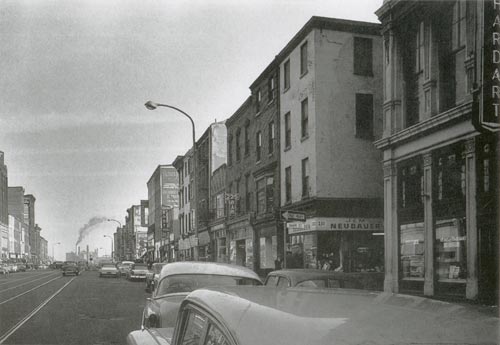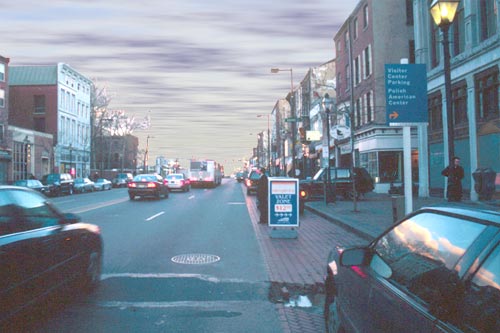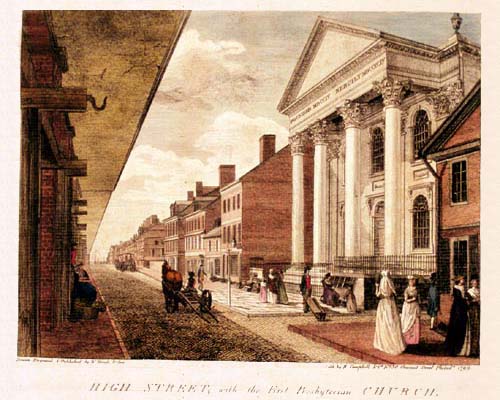Plate 9: High Street, with the First Presbyterian Church

View in 1960

View in 2000
Engraving
The First Presbyterian Church probably owes its origin to the evangelist Francis Makemie who in 1698 organized an ethnically mixed group of Presbyterians into a congregation. Under the leadership of its first permanent minister, Rev. Jedediah Andrews, a frame church building was erected in 1704 at the southeast corner of High (Market) Street and Bank. It was known as the Buttonwood Church, as it stood in a grove of buttonwood trees (sycamores). The building was enlarged in 1755, again in 1761 and rebuilt 1793-94. John Trumbull, who is best known as a painter of American historical scenes, was the architect at that time. The new church was the first public building in Philadelphia to have a classic temple facade with freestanding massive Corinthian columns and portico. As early as 1820 the columns needed to be replaced. After much controversy the congregation decided to leave its High Street site, opposite the market sheds, and to build a new structure, designed by John Haviland, at the corner of Seventh and Locust Streets facing fashionable Washington Square. Unfortunately the High Street church was demolished in 1822.
Photographs
The buildings between Front and Second Streets (BG-L 1960) were replaced by a ramp that was constructed about 1980 (for details see commentary, Plate 10). Horn and Hardart (FG-R) was established in Philadelphia in 1888 with the opening of its first "lunch room." In 1902, using equipment fabricated in Germany, it opened its first "auto- mat" at 818 Chestnut Street. "H and H," as it was commonly called, became a thriving popular-priced fast-food chain (the McDonald's of the time) operating principally in Philadelphia and New York until about 1991. Located on that Market Street site today is a fine restaurant called Tangerine.
Back Next


